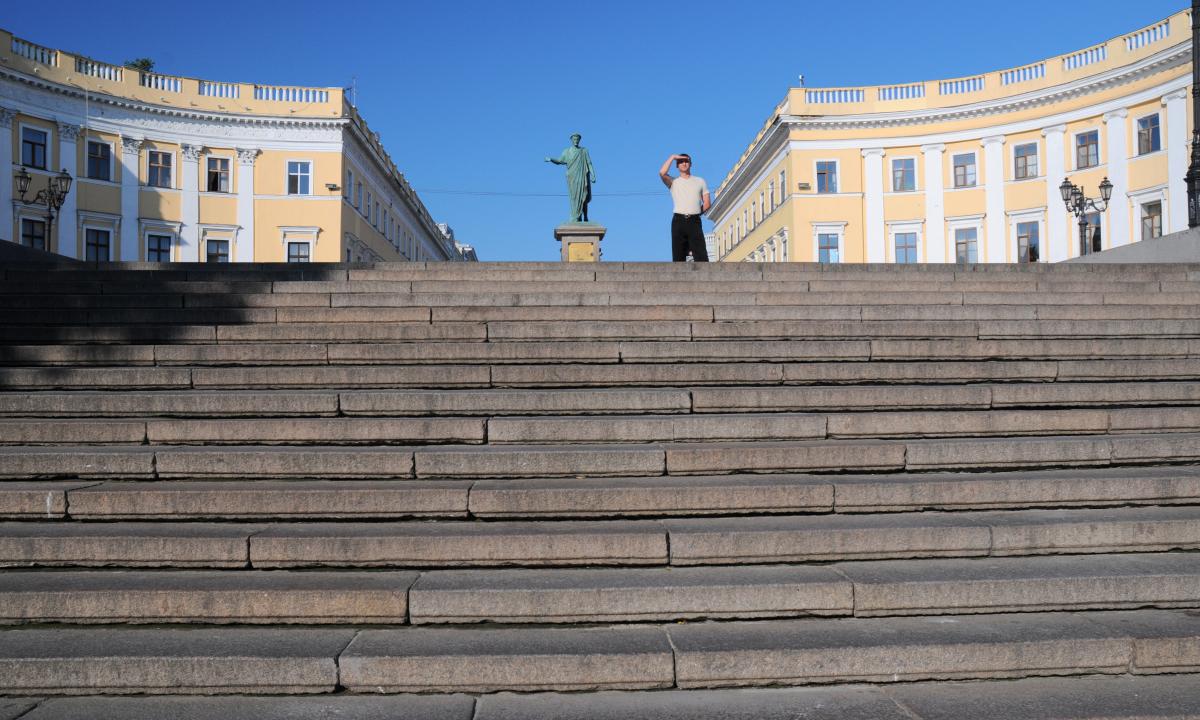Potemkin ladder, wide and long on the extent, by right is considered one of the main symbols of Odessa. Repeatedly it was represented on cards, calendars and the other printed materials connected with this city. Each tourist to whom has the luck to get to Odessa seeks to be photographed on its steps without fail, and daily big flows of citizens go down and climb it that there are almost nearly two centuries.
And the Potemkin ladder in this place was not always. There were times when descent to the sea was not equipped here in any way that was noted in the notes still by Alexander Sergeyevich Pushkin. A little later than there were here easy wooden designs which it was impossible to call reliable and, especially, it was impossible to compare to monumental steps of the Potemkin ladder. However the idea about creation of a certain thorough descent soared in air always, it was caused by a local landscape.
Those who were in Odessa well know that the city stands on the height whereas the coastline is from below rather residential and business areas. For this reason the city administration in far royal times thought of creating here a certain reliable and convenient descent which the well-known Potemkin ladder was subsequently. Wooden temporary short flights of stairs could not be considered how something durable, and then the city authorities decided to consider projects on construction of a stone ladder.
First of all, it was necessary to decide on style. It was so led that Odessa was built up in the spirit of neo-antiquity, imitating ancient Black Sea Greek policies. Respectively, and the ladder had to be in similar style. Finally, the group of architects where Potye, Melnikov and Boffo entered, presented the project in the 1835th year. Two years construction which lasted for four years with participation of foreign engineers began later. At last, in the 1841st the Potemkin ladder was open for inhabitants of Odessa and city visitors.
Progress in construction of a ladder was widely covered in the press – not only in Russian, but also in foreign. For a prototype for a new design the stone ladder which is already constructed some time in Taganrog, though the far smaller sizes was withdrawn.
It is necessary to tell that Potemkin the ladder was not always. At various times it carried the names Rishelyevskoy, ladders of Nikolayevsky Boulevard, Vorontsovsky, Huge. After the revolution of the 1917th year it was called after Boulevard Feldman, then – Seaside, and only then it finally received the present name – the Potemkin ladder.
Initially Potemkin ladder thought not simply as the main descent to the coastline – it was designed to become a peculiar symbol of the city, a main entrance to Odessa for all, arriving from the sea. For this reason undertook its development thoroughly. The city administration, designers and engineers achieved the objective fully – beauty and greatness of the Potemkin ladder the greatest writers and poets of the time repeatedly mentioned in the works and records. It was noted at Mark Twain, at Green, Jules Verna. Both Ostrovsky, and many other authors wrote about it. And it is not surprising, it is impossible to visit Odessa, to undertake the description of the city and to avoid this well-known ladder – anyway, but everyone who ever was in this city needs to mention it. There is no doubt that this ladder is one of the most remarkable not only in Ukraine and on a post-sovetstkom space, but also around the world.
For years the appearance of a ladder several times changed. From the very beginning it assumed existence of ten marches on twenty steps on everyone, however today its extent is hundred ninety two steps – the thing is that in progress in arrangement of port the last steps were broken, and it was necessary to reduce a ladder a little. However, externally it is not evident at all, and at first sight Potemkin ladder looks likewise as what it appears on pre-revolutionary cards.
Standing below or on the top of the Potemkin ladder, it is possible to notice that in its basis width much more, than at top. This is true because such is there was a project – from top to bottom the ladder extends. Today its extent is 142 meters, and height – 27 that it is possible to compare practically to the ten-storied house. At the edges the ladder is framed by parapets from a stone which thickness very impresses. The curious moment – if to rise at the very bottom of a ladder and to look up, it will seem is much longer, than it is actually. At the same time, flights will not be visible, and to a look only steps will appear. A show it, really, monumental and impressions of such viewing will remain forever with any tourist.
The beginning of the Potemkin ladder lies in Primorsk Boulevard – where the monument to Duc Richelieu stands nearby. Its arrangement completely coincides with original, initially conceived. And here about bottom edge of a ladder it is impossible to tell the same – in days of old it left directly to the sea and practically near it waves already lapped, and today the ladder breaks at Primorskaya Street, contacting her perpendicularly. Richelieu's monument mentioned above can be seen from ladder steps.
Several times for the history the Potemkin ladder was exposed to a renovation and restoration works. Changed facing for stronger types, investigated a condition of separate elements. And it, really, was necessary – it is impossible to imagine Odessa without its well-known ladder today. Having arrived here and having passed on it, you will feel, descent and rise are how easy here, you will see the colourful panorama opening from its steps, get a lot of unforgettable emotions and a set of colourful photos. The hospitable city of Odessa waits for any today!
